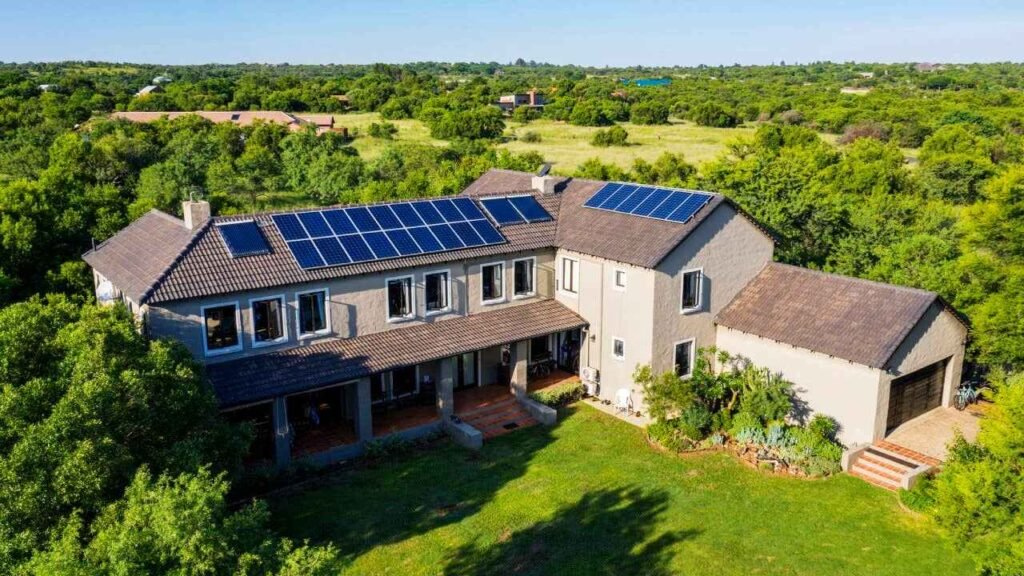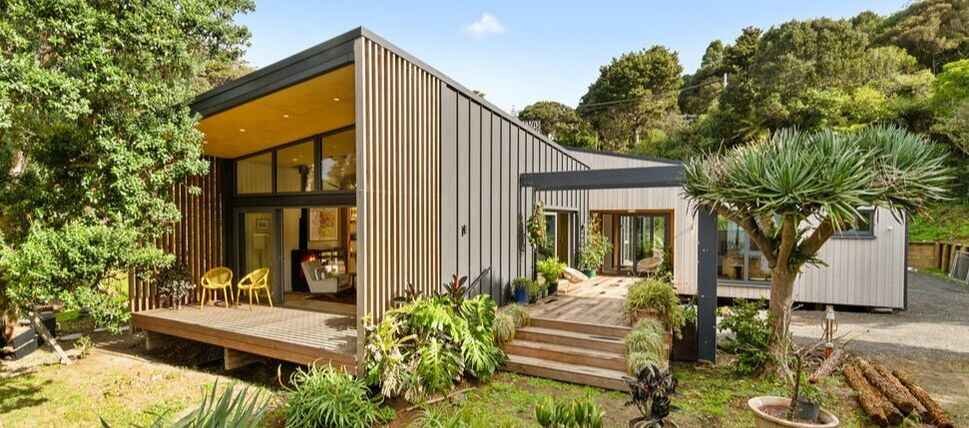Physical Address
304 North Cardinal St.
Dorchester Center, MA 02124
Physical Address
304 North Cardinal St.
Dorchester Center, MA 02124

Renovating your home is an exciting opportunity to enhance its beauty and functionality and make choices that are kinder to the environment. Sustainable renovation is more than just opting for eco-friendly materials; it’s a holistic approach that considers the entire lifecycle of your home—from the resources used in construction to the energy consumed daily and the long-term health of its inhabitants. This guide will delve deeply into various aspects of sustainable remodeling, offering insights and tips to help you make informed, impactful decisions that benefit your home and the planet.
Traditional renovation practices can have significant environmental impacts. From the extraction of raw materials to the waste produced during demolition, every step can contribute to resource depletion, habitat destruction, and pollution. Sustainable renovation aims to minimize these impacts by prioritizing resource efficiency, waste reduction, and using non-toxic, renewable, or recycled materials. The benefits extend beyond environmental considerations, encompassing economic savings and improved health and well-being for homeowners.
Building and construction activities account for a large portion of global carbon emissions. Choosing sustainable materials and methods, you help reduce the demand for energy-intensive processes like cement production and deforestation.

Many conventional building materials emit volatile organic compounds (VOCs) and other pollutants that can degrade indoor air quality, potentially causing health issues like respiratory problems and allergies. Sustainable renovations often focus on non-toxic, low-emission materials, contributing to a healthier living environment.
While some sustainable options may have higher upfront costs, they often lead to long-term savings through lower energy bills, reduced maintenance, and potentially higher resale value. Energy-efficient upgrades, for example, can lower utility costs, while durable materials reduce the need for frequent repairs and replacements.
When embarking on a sustainable renovation, one of the most significant steps is selecting durable materials with a low environmental impact. Here’s a detailed look at some of the best options available:

Wood is a versatile and popular material in home renovations, but choosing options that don’t contribute to deforestation or loss of biodiversity is important. Look for wood products certified by the Forest Stewardship Council (FSC), ensuring they come from responsibly managed forests.
Reclaimed Wood: This is wood salvaged from old buildings, barns, or even wine barrels. Using reclaimed wood reduces the demand for new lumber and gives your home a unique, storied look. Each piece carries a history, adding character and warmth to your space.
Engineered Wood: Made by binding wood fibers, particles, or veneers with adhesives, engineered wood is often more sustainable than solid wood. It uses smaller trees and waste materials that might otherwise be discarded.
Alternatives to Traditional Wood: Bamboo is a rapidly renewable resource, growing much faster than traditional trees. It’s a durable option for flooring and cabinetry. Cork, another renewable material, is harvested from the bark of cork oak trees without harming the trees, making it a sustainable choice for flooring and insulation.

Conventional paints can release harmful VOCs into the air, which can cause headaches, dizziness, and respiratory problems. Choosing low-VOC or zero-VOC paints is a healthier option for you and the environment.
Natural Paints: These are made from ingredients like clay, chalk, and natural pigments. They don’t emit harmful chemicals and can offer beautiful, soft finishes that age gracefully over time.
Milk Paint: This ancient paint is made from milk protein, lime, and natural pigments. It’s completely non-toxic and biodegradable and offers a distinct, matte finish perfect for creating vintage or rustic looks.
Sealants and Finishes: Opt for water-based sealants and finishes that emit fewer harmful chemicals than their solvent-based counterparts. Natural oils like linseed or tung oil can be used to seal wood surfaces, offering protection without toxicity.
Incorporating recycled materials into your renovation reduces waste and adds a unique touch to your home’s design.
Recycled Metal: Using recycled steel or aluminum for countertops, backsplashes, or structural elements reduces the need for new metal production, which is energy-intensive and contributes to greenhouse gas emissions.
Recycled Glass: This can be used in tiles, countertops, or decorative features. Recycled glass countertops, for example, offer a vibrant, unique look and are highly durable.
Renewable Materials: Materials like cork, linoleum, and natural stone are not only sustainable but also bring a natural, timeless beauty to your home. Linoleum, made from linseed oil, wood flour, and jute, is biodegradable and naturally resistant to bacteria.
Waste management is a critical aspect of sustainable renovation. By planning carefully and choosing the right processes, you can significantly reduce the amount of debris and discarded materials that end up in landfills.
Before starting your renovation, ensure you have accurate measurements and a detailed plan. This minimizes the chances of ordering too much material, which often leads to waste.
Design for Flexibility: Plan your renovation with future changes in mind. Flexible design means you can easily adapt spaces without extensive demolition, reducing waste in the long run.
Modular Design: Consider modular designs for cabinetry or shelving. Modular units are easier to install, remove, and repurpose, which can reduce the need for replacements and minimize waste.
Deconstruction involves carefully dismantling buildings or spaces to salvage reusable materials rather than destroying everything indiscriminately. This method can save up to 90% of a building’s components from the landfill.
Materials to Salvage: Items like hardwood flooring, bricks, cabinetry, and fixtures can often be reused or donated. These materials can add character to new projects and reduce the demand for new resources.
Community Resources: Look for local organizations or businesses specializing in building material reclamation. They can often provide a market for your salvaged materials or offer reclaimed materials for purchase.


Before throwing away old fixtures or appliances, consider donating them. Many organizations, such as Habitat for Humanity, accept used building materials, furniture, and appliances.
Recycling Centers: Check with local recycling centers to see what types of construction waste they accept. Materials like metal, concrete, and certain plastics can often be recycled instead of discarded.
Creative Reuse: Think creatively about how to repurpose materials within your renovation. For example, old wood beams can create rustic shelving, and salvaged bricks can be used for garden paths or outdoor features.
Improving your home’s energy efficiency is one of the most impactful steps you can take during a sustainable renovation. Energy-efficient homes not only lower utility bills but also reduce the environmental impact of heating, cooling, and powering your home.

Proper insulation is crucial for maintaining a comfortable indoor climate and reducing energy consumption. Consider eco-friendly options like cellulose insulation made from recycled paper or denim insulation, which is safe and easy to handle.
Air Sealing: Sealing gaps and cracks around windows, doors, and in the attic can significantly reduce drafts and improve energy efficiency. Use caulks and weatherstripping made from sustainable materials.
Insulated Windows: Replacing single-pane windows with double—or triple-pane options coated with low-E can dramatically reduce heat loss in the winter and keep your home cooler in the summer.
Replacing old appliances with energy-efficient models is an easy way to reduce your home’s energy consumption. Look for the ENERGY STAR label, which indicates that an appliance meets strict energy efficiency guidelines set by the U.S. Environmental Protection Agency.
Smart Appliances: Many modern appliances have smart technology that allows you to monitor and control energy use remotely. This can help you optimize their performance and reduce unnecessary energy consumption.
Water-Saving Fixtures: Installing low-flow faucets, showerheads, and toilets can significantly reduce water usage without sacrificing performance.
Incorporating renewable energy into your home can significantly reduce its carbon footprint. Solar panels are the most common choice, but other options are available depending on your location and budget.
Solar Panels: These can provide a significant portion of your home’s electricity needs and are increasingly affordable due to technological advances and government incentives. If a full solar installation isn’t feasible, consider smaller applications like solar water heaters or solar-powered lighting.
Wind and Geothermal Energy: In certain areas, small wind turbines or geothermal systems can be effective ways to supplement your home’s energy needs. These systems can be costly to install but offer substantial savings over time.

Investing in sustainable renovation goes beyond environmental responsibility; it’s a forward-thinking approach that offers numerous benefits.

Homes with energy-efficient upgrades and sustainable features often sell for a premium compared to traditional homes. As more buyers become environmentally conscious, the demand for eco-friendly homes is growing.
Sustainable homes are often healthier to live in. Improved air quality, better temperature regulation, and non-toxic materials contribute to a more comfortable and healthier living environment.
Energy-efficient homes cost less to operate, with lower utility bills and maintenance costs. Over time, the savings can offset the initial investment in sustainable materials and technology.
Renovating your home offers the perfect opportunity to align your living space with your values. One increasingly important consideration is sustainability. Making eco-friendly choices during a remodel not only benefits the environment but can also enhance the health, comfort, and value of your home.